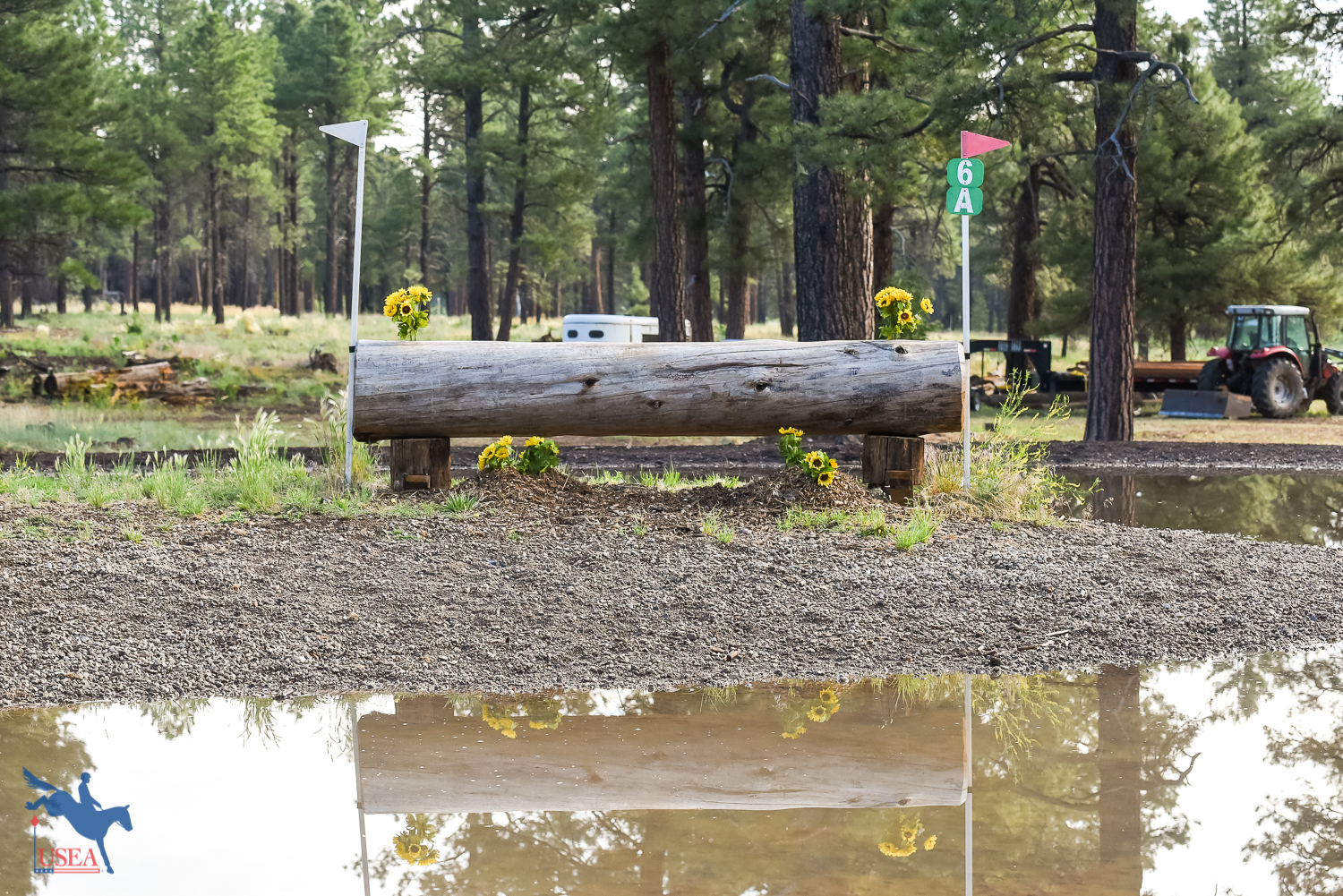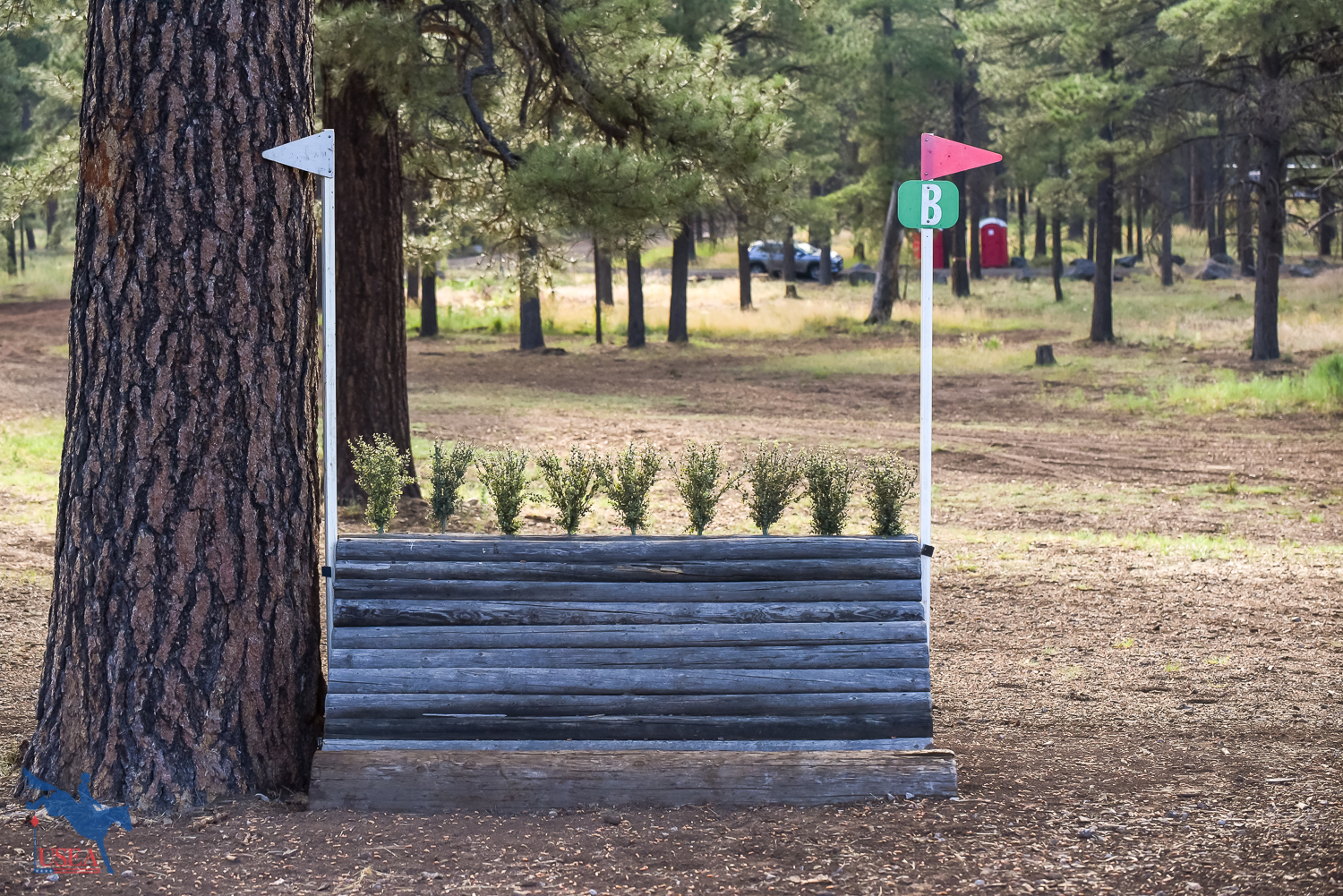Ride Between the Flags with Barb Crabo

Ever wonder what the pros see when they're out walking cross-country? In the Ride Between the Flags series, riders walk us through their approach to tackling different cross-country questions. International event rider and trainer Barb Crabo talks us through fence 6AB, the Preliminary level water combination at the Coconino Horse Trials.
The Coconino Horse Trials run back-to-back weekends with their Summer I Horse Trials and Western Underground, Inc. Summer II Horse Trials & Three-Day Event in July each year. Both weekends offer Introductory through Intermediate level competition with the second weekend also offering Beginner Novice, Novice, and Training Three-Day divisions. Barb Crabo, Area X international event rider and trainer, took a moment to walk us through the first water combination on the Preliminary cross-country course, fence 6AB.
Riders gallop through the trees to the first water complex, which is circular with a small raised island in the middle. Riders gallop through the water and onto the island, where they jump over the A element of the combination – a log.

“There’s a lot to look at when they come in here so you’re going to half-halt as you come through the trees and then I would accelerate a little before coming to the water, realizing that it’s just a small span of water so their stride might not stay the same,” Crabo began. “Even if you see a distance, you can’t really anticipate when they’re going to jump the log. I’m just going to keep my shoulders way back, sit down, press into the water and then just keep pressing all the way up. Don’t actually jump with your horse until your horse is jumping the jump.”
“As you’re coming out of the water, there’s a change in terrain,” she continued. “They sometimes will see the line of the water as a ground line so they may adjust their stride so they’re almost jumping that little line. You need to press and keep that energy – if you take your leg away that uphill combined with the water and the log they’ll kind of fade away and then they’ll get there at a funny distance and then you have a bad jump or a stop.”
After tackling the log, riders go back down the slope of the island and into the water once more, looking to the right where the B element – a ramped log pile – sits six strides away to the right.

“Go straight until you get in the water and then look around your turn and it’s a pretty nice six strides,” Crabo explained. “You’ve got to get over the log and then look to get to your next fence. If you start looking for the B element before you get over the A element, you won’t have a good jump over the A element.”
“I haven’t experienced [the shadows] to be a problem,” Crabo continued. “They’re in and out of so many shadows that it’s not like you’re in a big open field and then suddenly in a dark shadow. The whole time you’re on course you’re already going in and out of shadows, so I think they’ve already started making that adjustment. You can ride to this and their eyes are going to adjust on this right when you get them looking at it and focused on it.”

“It’s nice and rampy, so even if the fact that this has so much of an up lip and then you’re going downhill that can change their gait a little bit – they might stumble or have to find their feet – so you just sit up and are patient to this with your leg on. It’s so rampy with a nice ground line that even if they have to add a step they can just pop over it. I would also be a little bit to the left because on the left you have the tree holding you and on the right you have nothing.”














